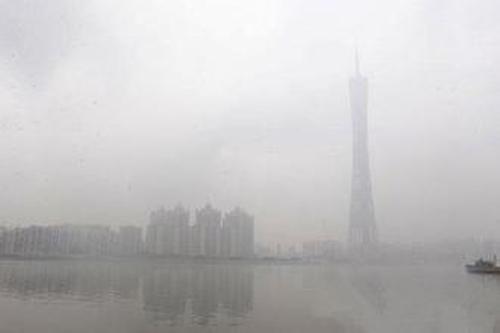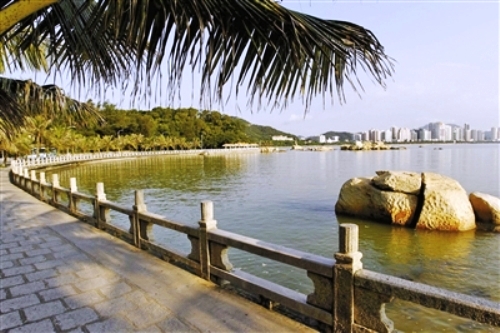It seems life in China is always a bit of a balancing act: on the one hand, you get valuable international experience, meet amazing people, eat great food, and generally broaden your horizons substantially. Some who come to China find new skills, new careers, even a spouse. Then there’s the downside: polluted air, dangerous food, traffic, visa runs, and more. Usually the benefits of living in China outweigh the costs, but that has changed for a couple of prominent expats who wrote long essays this week about why they’re leaving China.
The first is Charlie Custer, who made his fame by blogging at ChinaGeeks. Custer has spent several years in the country and was working on a documentary called Living with Dead Hearts, which delved into the sensitive issue of child kidnappings in China. Still, he’s probably most famous for calling on CCTV Dialogue host Yang Rui to be fired after Yang unleashed a torrid vitriolic rant against foreign “trash” in Beijing. (You know you’re famous in China when Next Media Animation does a video with you in it.)
Still, Custer felt it was time to go, and left behind a blog post which was published after he was already in the sky and en route to the United States. He said his two primary reasons for leaving are air quality and food safety, issues that became even more pressing as he and his wife discuss starting a family. But those weren’t the only two issues:
Of course, I’d be lying if I said I wasn’t affected by China’s political situation. For someone who truly believes China would be better served by a system that afforded its people, at the very least, a free press and the true rule of law, this has been a depressing couple of years. Depressing, soul-crushing and occasionally terrifying. But if I’m honest with myself, even with the political situation, I really think I’d be staying in Beijing if I felt like I could breathe safely.
I don’t think I’m alone there. I know plenty of families in Beijing, and it’s not my intent to criticize anyone else here; I’m just trying to explain my own rationale. But these are issues everyone here struggles with. And for those Chinese and foreign who, like me, are lucky enough to have the means to move elsewhere, some are going to make that choice. As the data on pollution gets clearer, perhaps more are going to make that choice. And while China has made some strides in agreeing to report things like PM2.5 publicly in some cities, I unfortunately don’t see the pollution problem disappearing anytime soon.
This isn’t really even China’s fault. OK, yes it is, but it’s also a fairly natural (if disgusting) stage of development. I don’t know if industrial-era London every looked quite this bad, but I gather it wasn’t the cleanest place ever. The thing is, though, would you choose to live in industrial revolution London?
That choice, I think, is part of China’s problem. As Chinese salaries go up and the education system gets better — and here’s hoping those things do improve despite what’s looking like a fairly ugly bump in the economic road — more and more people are going to have the same choice I have.
In fact, at least one other expat has made the same choice. Mark Kitto originally came to China in 1986, and might be known (by the longest-of-long term expats in the PRD) as the founder of the That’s magazine franchise (which includes That’s PRD – formerly That’s Guangzhou). Kitto has had his ups-and-downs in the country, but has pretty much lived here since his college days. His story of how he lost the That’s magazine franchise has become legendary.
But he, too, is leaving. In a multiple-page story in the latest issue of Prospect, he says:
I wanted China to be the place where I made a career and lived my life. For the past 16 years it has been precisely that. But now I will be leaving.
I won’t be rushing back either. I have fallen out of love, woken from my China Dream.
Unfortunately this story is behind a paywall, although I have read a PDF version. In it, Kitto describes the air and food quality issues, and also the fact his business – he runs a coffee shop in Moganshan in Shanghai – could be taken from him at any time. His primary concern though, he said, is for his children’s education. He painted a bleak picture of China’s gaokao system and says the country’s schools are nothing more than testing factories.
He also observes China’s growth over the years; he said in the late 1980s (before Tiananmen Square) there was a spirit of community and optimism that turned to consumerism and individualism following the crackdown.
Kitto and Custer aren’t the first two expats to decide they’ve had enough; the question is whether this is a growing trend. Or, perhaps, China is meant for the young: once a spouse and kids are in the picture, the negative side of living here begins to outweigh the positive and China loses its lustre.
The headline of Kitto’s column does make a good point though. No matter how long we stay, or how good our Mandarin is: “You’ll never be Chinese.”
(The front page image is of Mark Kitto and his family. The image originally appeared in Prospect magazine).




















Reasons to leave China: two prominent and long-term expats have thrown in the towel
Posted: 07/27/2012 5:22 pmIt seems life in China is always a bit of a balancing act: on the one hand, you get valuable international experience, meet amazing people, eat great food, and generally broaden your horizons substantially. Some who come to China find new skills, new careers, even a spouse. Then there’s the downside: polluted air, dangerous food, traffic, visa runs, and more. Usually the benefits of living in China outweigh the costs, but that has changed for a couple of prominent expats who wrote long essays this week about why they’re leaving China.
The first is Charlie Custer, who made his fame by blogging at ChinaGeeks. Custer has spent several years in the country and was working on a documentary called Living with Dead Hearts, which delved into the sensitive issue of child kidnappings in China. Still, he’s probably most famous for calling on CCTV Dialogue host Yang Rui to be fired after Yang unleashed a torrid vitriolic rant against foreign “trash” in Beijing. (You know you’re famous in China when Next Media Animation does a video with you in it.)
Still, Custer felt it was time to go, and left behind a blog post which was published after he was already in the sky and en route to the United States. He said his two primary reasons for leaving are air quality and food safety, issues that became even more pressing as he and his wife discuss starting a family. But those weren’t the only two issues:
In fact, at least one other expat has made the same choice. Mark Kitto originally came to China in 1986, and might be known (by the longest-of-long term expats in the PRD) as the founder of the That’s magazine franchise (which includes That’s PRD – formerly That’s Guangzhou). Kitto has had his ups-and-downs in the country, but has pretty much lived here since his college days. His story of how he lost the That’s magazine franchise has become legendary.
But he, too, is leaving. In a multiple-page story in the latest issue of Prospect, he says:
Unfortunately this story is behind a paywall, although I have read a PDF version. In it, Kitto describes the air and food quality issues, and also the fact his business – he runs a coffee shop in Moganshan in Shanghai – could be taken from him at any time. His primary concern though, he said, is for his children’s education. He painted a bleak picture of China’s gaokao system and says the country’s schools are nothing more than testing factories.
He also observes China’s growth over the years; he said in the late 1980s (before Tiananmen Square) there was a spirit of community and optimism that turned to consumerism and individualism following the crackdown.
Kitto and Custer aren’t the first two expats to decide they’ve had enough; the question is whether this is a growing trend. Or, perhaps, China is meant for the young: once a spouse and kids are in the picture, the negative side of living here begins to outweigh the positive and China loses its lustre.
The headline of Kitto’s column does make a good point though. No matter how long we stay, or how good our Mandarin is: “You’ll never be Chinese.”
(The front page image is of Mark Kitto and his family. The image originally appeared in Prospect magazine).